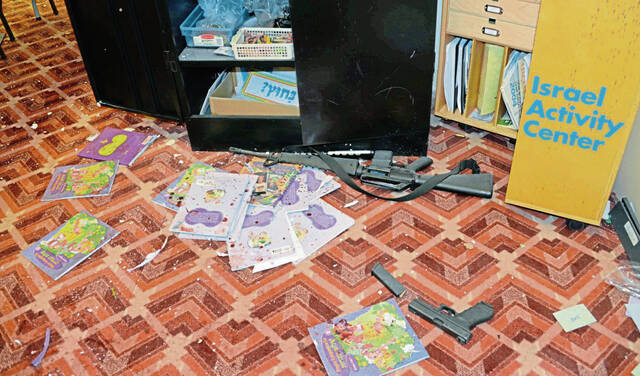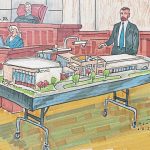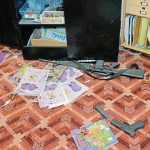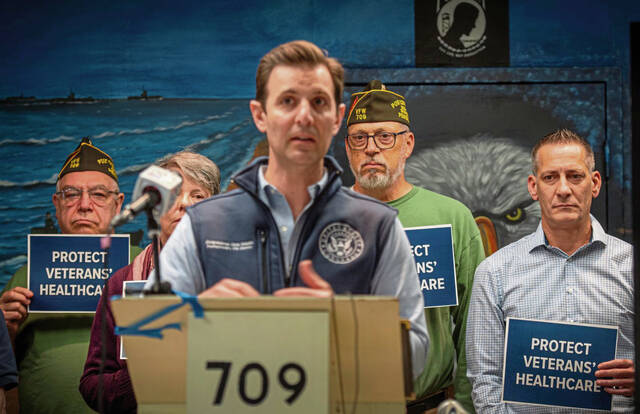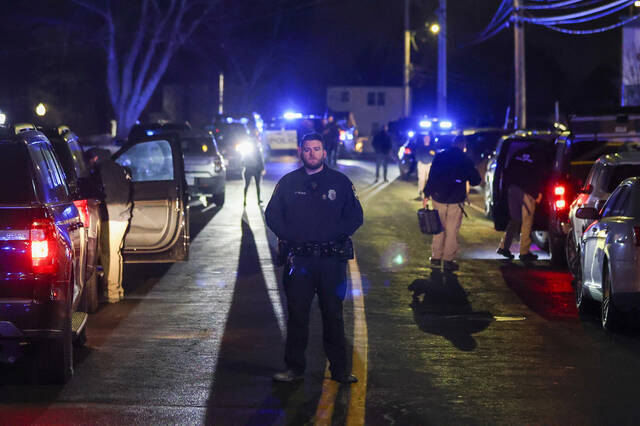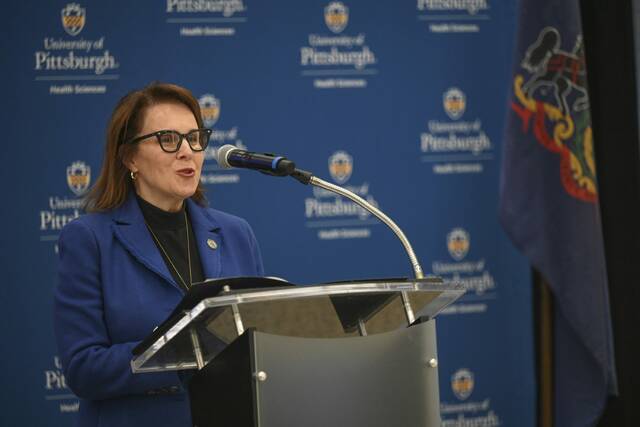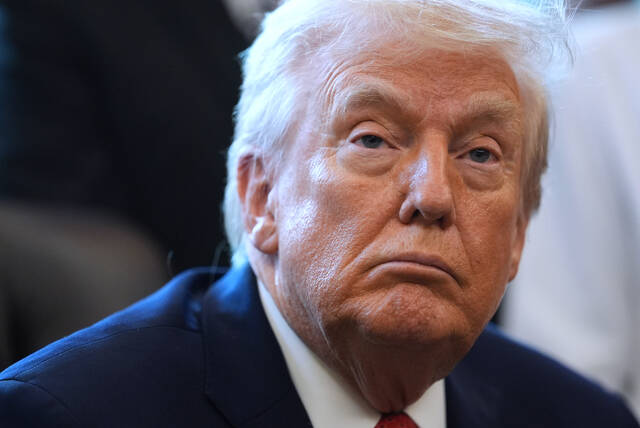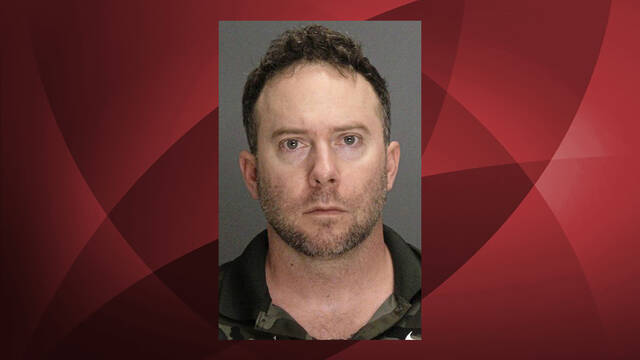The second week of trial in the Squirrel Hill synagogue mass shooting featured testimony from 25 government witnesses, video from inside the synagogue as Pittsburgh SWAT officers cleared the building the morning of Oct. 27, 2018, and difficult-to-hear autopsy evidence for the 11 victims.
In addition, one member of the jury, a white woman, was dismissed on Monday, leaving it with 12 jurors and five alternates.
Robert Bowers, 50, of Baldwin could face the death penalty if convicted on 63 federal counts, including that he killed members of three Jewish congregations to obstruct their worship.
The victims, who were members of Tree of Life-Or L’Simcha, Dor Hadash and New Light, include Bernice Simon, 84, and her husband, Sylvan, 86, along with brothers David Rosenthal, 54, and Cecil Rosenthal, 59; Dan Stein, 71; Irving Younger, 69; Dr. Jerry Rabinowitz, 66; Joyce Fienberg, 75; Melvin Wax, 87; Richard Gottfried, 65; and Rose Mallinger, 97.
Below is a summary of the witnesses, their role in the case, how long they were on the stand and the evidence they presented.
22. Michael Saldutte (1 hour, 46 minutes)
A Pittsburgh police SWAT officer, Saldutte was right behind fellow officer Timothy Matson when he was shot inside the synagogue.
Saldutte watched as Matson crumpled to the floor in front of him and saw Matson get shot again several times.
“I dove in front of him,” Saldutte testified.
Saldutte said he pressed his shoulder to the floor and lay in front of Matson to protect his fallen colleague.
“Our job is to put body armor, ourselves, in front of him,” Saldutte said.
Saldutte saw muzzle flashes coming from the back of the classroom where Bowers was shooting and returned fire.
But then, he ran out of ammunition.
“It is probably the worst feeling I’ve ever had in my life,” he testified.
Saldutte was also there when Bowers surrendered and crawled out of the room.
When asked why he had attacked the synagogue, Bowers said, “ ‘The Jews are killing our women and children. I had to do this.’ ”
23. Eric Barazotto (1 hour, 4 minutes)
Barazotto, a member of the Pittsburgh SWAT team’s Tactical EMS unit, was one of five of the specially trained medics first on the scene the morning of the shooting.
Although the SWAT medics typically carry firearms, Barazotto’s was on the SWAT vehicle that had not yet arrived on scene.
He entered the building anyway.
“There were people inside that were injured and potentially viable,” he said.
He partnered with another medic, Justin Sypolt, who was armed.
Barazotto testified that when he got inside, he saw several deceased victims.
But then he heard Sypolt yell out that they had a victim still alive.
“I was surprised,” he said.
That man, Dan Leger, was in critical condition and barely conscious, shot in the abdomen.
As he continued through the synagogue, Barazotto heard a gunfight upstairs.
As he got closer, he realized Matson had been shot.
“Oh, dear God, it’s Tim,” Barazotto thought to himself.
Matson, the biggest member of the team at about 6 feet 5 inches and 315 pounds, would be difficult to rescue.
24. Justin Sypolt (45 minutes)
A SWAT team medic, Sypolt testified that after he found Leger alive and helped to carry him to safety, he then helped to get Andrea Wedner, another congregant who had been shot in the Pervin Chapel, to safety.
Then he moved through the rest of the building, checking the deceased victims.
When he heard gunfire erupt upstairs, he ran toward it. As he got closer, he saw dust in the air and heard officers yelling that Matson had been shot.
Matson was critically wounded with gunshot wounds to the leg and head.
“We need to get him out of here right now,” Sypolt told his colleague.
They got Matson on a stretcher, and seven people carried him to safety.
Assistant U.S. Attorney Soo Song asked Sypolt what would have happened to Matson and Leger if they hadn’t gotten immediate medical care.
“They both would have died.”
25. Andrew Miller (15 minutes)
A Pittsburgh SWAT team leader, Miller’s team was the first to enter the synagogue during the attack at 10:29 a.m.
Within minutes, he radioed that they needed additional resources based on the size and complexity of the building.
Andrew Miller, continued (34 minutes)
Miller testified that his team realized as they neared the top floors of the synagogue that the shooter was likely hiding there, because they were running out of rooms to check.
He was behind Matson and Saldutte as they entered the classroom where the gunfight began.
“As soon as he got into the room, he got shot,” Miller said of Matson.
The room filled with smoke and debris from the ceiling, but shining his flashlight just made it appear like he was looking through fog. He felt bullets spraying all around him.
“He was just missing,” Miller testified. “Just missing me.”
Miller aimed at a metal cabinet door that he thought Bowers was hiding behind, firing repeatedly.
“I didn’t want to get shot,” he said. “I didn’t want to die.”
Once he knew Matson and Saldutte had gotten out, Miller retreated to help.
They dragged Matson down the steps and removed his ballistic helmet and body armor.
Miller saw a bullet wound to the right side of Matson’s head.
“But he was still talking,” Miller testified. “I didn’t know how somebody could have survived that wound.”
26. Dr. W. Ashton Ennis (2 hours 11 minutes)
Dr. Ennis, previously with the Allegheny County Medical Examiner’s Office, testified that he performed autopsies on Cecil Rosenthal, Stein, Younger and Wax. Every victim examined was shot multiple times with a rifle.
27. Dr. Baiyng Xu (1 hour 14 minutes)
Dr. Xu, who currently works for the county medical examiner, conducted autopsies on Fienberg, Gottfried, Mallinger and Rabinowitz.
28. Dr. Todd Luckasevic (46 minutes)
Dr. Luckasevic, who works for the county medical examiner’s office, performed autopsies of David Rosenthal, Bernice Simon and Sylvan Simon.
29. John Persin (31 minutes)
A Pittsburgh SWAT officer, Persin was one of the first to enter the synagogue that morning. He told the jury that he still remembers the smell of iron from spilled blood in Pervin Chapel.
“They invade my thoughts every day — the violence, the smells, the sights,” Persin testified.
He described clearing the chapel from back to front looking for Bowers, and then moving front to back looking for victims.
He found Wedner lying under her mother, Mallinger. He also found the Simons.
30. Andrea Dammann (2 hours, 40 minutes)
A retired FBI special agent, Dammann led the evidence recovery and collection at the synagogue.
She described the tedious, methodical process followed by a group of more than 60 people deployed from units from Pittsburgh, Baltimore, Washington and Seattle.
The FBI had control of the scene for nine days and during that time photographed each room, each bullet and each piece of evidence multiple times.
They also diagrammed the synagogue by hand and via computer, completed laser scans and measured the building with survey equipment.
Agents collected 62 spent rifle cartridges in various rooms, including 13 in Pervin Chapel, 16 in a mezzanine area, 13 in a mezzanine lobby and 10 in the basement where the New Life congregation worshipped and a nearby kitchen.
In the room where police and Bowers got into a firefight, Dammann said they found seven rifle casings and 17 from a handgun. In Bowers’ car, they recovered an ammunition pouch containing 21 loaded rifle magazines and shotgun shells.
31. Mandy Tinkey (54 minutes)
The lab director for the Allegheny County Medical Examiner’s Office, Tinkey testified that her group worked through the night after the attack to identify the 11 victims inside the synagogue, collect their remains and notify families.
The bodies, she said, were moved in accordance with Jewish custom, which calls for someone to stay with the bodies at all times to pray over them.
32. Alan Trees (6 minutes)
A district manager for law enforcement with Glock manufacturing, he testified that the holster removed from Bowers was manufactured in Austria, where the company is based, before being shipped to the United States and distributed from Georgia.
33. Shawn Eigenbrode (19 minutes)
Eigenbrode is a member of the Pittsburgh SWAT tactical EMS who responded to the classroom where Bowers was moved after he was taken into custody.
When he got in the room, the suspect was lying on the floor in the middle of a rug. His clothes had been removed to assess his injuries.
“He was awake, looking at us, pretty cooperative with any of our demands or questions,” Eigenbrode said.
He said he moved Bowers’ restraints from behind his back to in front of him and put the suspect’s pants back on his body.
Bowers also told medics that a procedure being performed on him hurt, “but not as much as being shot,” Eigenbrode testified.
He and three other paramedics carried Bowers down a narrow fire escape on a fabric stretcher.
As they did, Bowers’ elbow, which had sustained a gunshot wound, dragged along the brick wall, leaving a blood trail.
“I said, ‘Sorry, dude, I’m trying to stabilize us so we don’t fall,’ ” Eigenbrode testified.
34. Michael O’Keefe
O’Keefe, who retired from the Allegheny County police after 25 years, was a tactical commander for the SWAT unit the day of the attack.
He was in the hallway as Bowers surrendered and said he heard him make the hateful comments about Jews.
When Bowers was asked why he gave up, O’Keefe said the man answered “that he was shot and also that he had run out of ammunition for his AR-15.”
O’Keefe also said Bowers had a green plastic digital timer with him, called a “screaming meanie,” that was set for 11:40.
Although officers feared the timer could be wired to an explosive device, Bowers told O’Keefe it was a noisemaker he planned to use to distract police.
35. Justin Lapaglia (43 minutes)
Lapaglia, another member of the Pittsburgh police SWAT team, said he expected to hear cries and screams for help when he entered the synagogue that morning.
Instead, he said, “It was eerily quiet.”
He described seeing the deceased victims as he worked his way through the building, trying to follow what he believed was Bowers’ path. He tracked rifle casings on the floor and bullet strikes in walls and ceilings.
Lapaglia also told the jury that he found two survivors, Carol Black and Barry Werber, who had been hiding in a room downstairs.
“I heard a woman’s voice inside that room,” he said. “She said, ‘We’re inside,’ and I told them to come out with their hands up.
“They were pale and unresponsive. They looked like they were in shock,” Lapaglia said. “I was surprised they were able to follow my directions.”
36. David Blahut (26 minutes)
Pittsburgh police SWAT Officer Blahut testified that he heard Bowers talk about killing Jews.
He also said Bowers complained that the flex cuffs binding his arms behind his back were too tight.
“I told him he would be treated humanely, and we had medics coming to take care of him,” Blahut said.
Bowers responded, “Good, these people are committing genocide on my people, and I just want to kill Jews.”
Blahut described Bowers as calm and lucid, using a normal tone of voice.
37. Robert Shaw (9 minutes)
Shaw, a Pittsburgh police homicide detective, testified that he was with Bowers when he was taken to Allegheny General Hospital after the shooting.
He described Bowers as being polite and cooperative to hospital staff.
38. Stephen Cohen (13 minutes)
Cohen, co-president of New Light, said the congregation entered a long-term lease agreement with the Tree of Life congregation to rent space in the building’s basement starting in September 2017. That lease allowed New Light congregation to sever the agreement if the building was unusable for more than 120 days.
“The building became unusable because of the attack,” Cohen testified.
39. Alan Hausman (11 minutes)
Hausman, the Tree of Life president, said it was a mutually beneficial agreement to house all three congregations in the building, strengthening their collective spiritual experience. The Tree of Life congregation got rental income to maintain the building it owns, and members of the congregations would have lunch and worship together.
“It was a very positive experience,” he said.
The attack at the synagogue has resulted in the loss of tens of thousands of dollars in rental income, he said.
40. Matthew Reid (12 minutes)
Reid, a supervisor of investigation and security with Comcast, testified about Bowers’ internet service at his home on McAnulty Road in Baldwin.
Bowers, who used the email address onedingo@comcast.net, started service on Nov. 9, 2016.
It was disconnected less than a month after his arrest.
41. Marcy Plaza (1 hour, 41 minutes)
Plaza, a forensic examiner in the FBI’s DNA Casework Unit at Quantico, Va., analyzed samples taken from Bowers’ weapons and other items found in his car and home.
She testified that DNA found on his Colt AR-15 and two Glock handguns was 6 septillion times more likely that it was Bowers’ DNA than an unknown person.
42. Curtis Thomas (1 hour 9 minutes)
Thomas, a supervisory electronics engineer at the FBI in Quantico, Va., testified that he was asked to unlock Bowers’ password-protected smartphone.
It took two to three hours to break the six-digit pattern and unlock the phone.
When they did, they didn’t find much.
Bowers didn’t have a single text message or contact that hadn’t been deleted.
However, investigators found that the phone had briefly visited the social network Gab at 9:47 a.m. on the day of the shooting.
They also retrieved cached images, including selfies of Bowers, photos of guns and documents with his name.
In a few of the images, Bowers is flashing what traditionally has been known as the gesture for “OK” — forming his index finger and thumb in a circle, with three fingers up, as he peers through the circle.
But that gesture has been used in recent years to represent white supremacy and the far right, according to the Anti-Defamation League and others.
43. Erin Casey (35 minutes)
Casey, a visual information specialist with the FBI’s Operational Projects Unit, testified that she compiled data collected by a shooting reconstruction team at the crime scene to create scale digital and physical models of the synagogue and its rooms that have been used throughout the trial. That team gets one chance to make sure everything is accurate, from the trajectory of gunshots to scanning measurements between objects in rooms, she said.
44. Shawn Gladde (8 minutes)
Gladde worked for UPMC police at the time of the shooting. He described how bullets, fragments and other items were collected from Wedner and Matson by their doctors when they were treated at UPMC Presybterian hospital after the attack.
45. Cedric Jefferson (46 minutes)
An FBI supervisory special agent, Jefferson led the search of Bowers’ home the evening of the attack, spending about eight hours collecting evidence from the small, one-bedroom apartment.
“The residence appeared to be very neat and organized, not cluttered,” Jefferson said.
There was ammunition sitting in the middle of the floor and a computer was still on.
They discovered three DVDs related to concealed-carry rights, home defense and self-defense. One of them was titled “Proven Ground: How to Ensure You’re Physically and Mentally Prepared to Protect Yourself From a Deadly Threat.”
Investigators also found clothing hanging in a closet with a tool box on the floor and a Monopoly board game on an upper shelf.
A shooting target hung on the wall underneath an air-conditioning unit, and there was an empty rifle case and three empty Glock handgun cases.
Five firearms were found inside the apartment, as well as a “substantial amount” of ammunition and an open gun safe.
46. Anthony Burke (42 minutes)
A Pittsburgh police SWAT officer, Burke was shot through his right hand as he tried to help Matson, his mentor on the team, escape the gunfight.
“Officer Matson was attempting to crawl out. I then reached — I tried to grab the strap, the ‘dead man’s strap’ on the back of his vest.”
As he did, Burke was shot in the hand.
The bullet entered the top of Burke’s dominant hand and blew out the bottom, fracturing his ulna and exploding the small bones in his wrist.
A colleague put a tourniquet on his arm, but he continued to lose blood.
He then took Burke’s pistol out of his holster and placed it in Burke’s left hand so he could be ready to fight.
Burke has had four surgeries, including receiving a cadaver nerve in his wrist when his own nerve stopped carrying signals to his hand. When that didn’t work, doctors removed a tendon from his leg and put it in his wrist.
Although he returned to work as a police officer in December 2019, Burke said he still has sensory issues with the top of his hand and finger pads and has trouble with fine motor skills.



